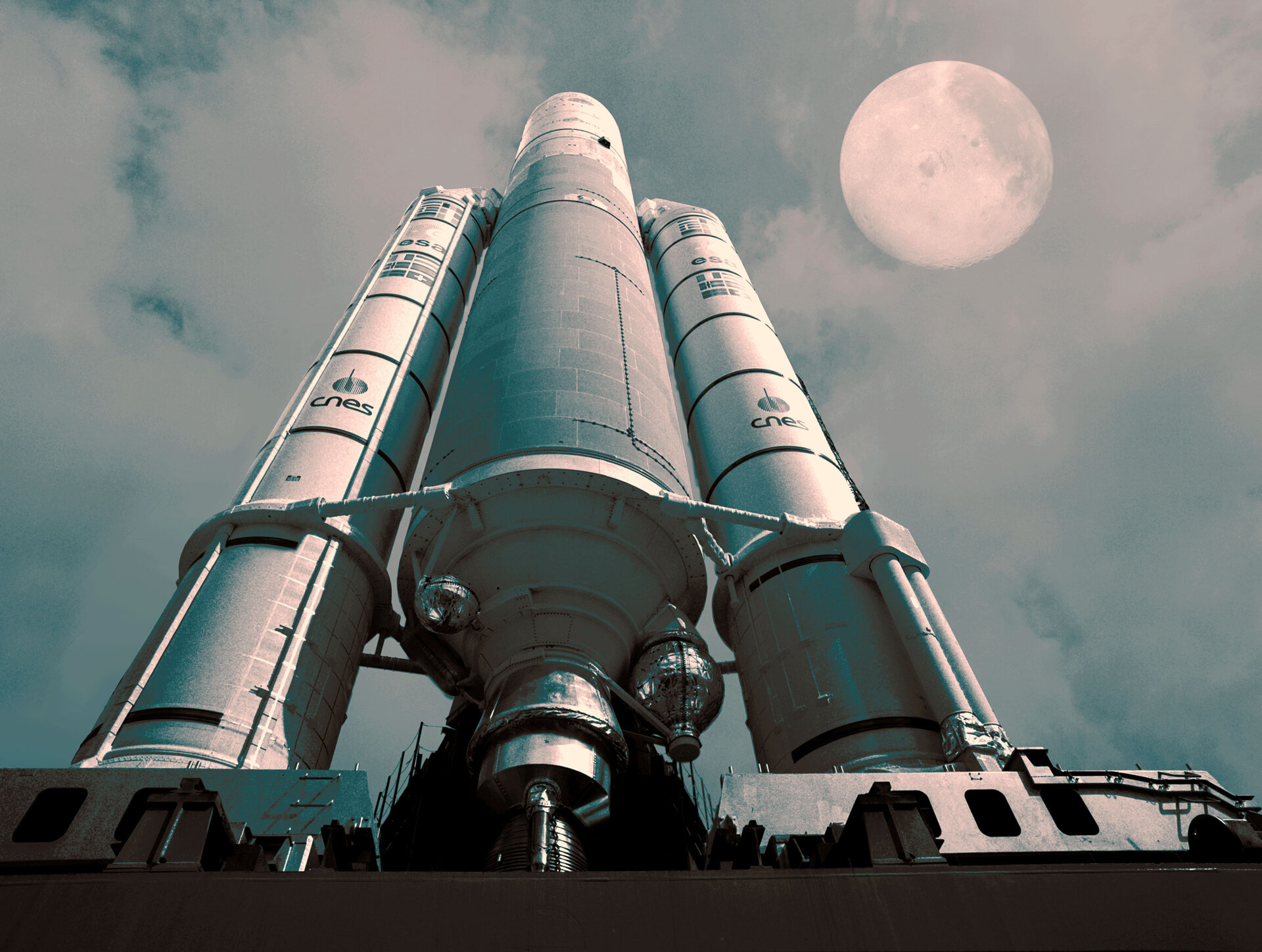By Sun power to the Moon
| “As the first spacecraft to use primary electric propulsion in conjunction with gravity manoeuvres, and as Europe's first mission to the Moon, SMART-1 opens up new horizons in space engineering and scientific discovery. And we promise frequent news and pictures, so that everyone can share in our lunar adventure.” Giuseppe Racca, ESA's SMART-1 Project Manager |
By March 2003 a hitchhiking team of engineers and scientists will be at Europe’s spaceport at Kourou in French Guiana, thumbing a lift for a neat little spacecraft, ESA’s SMART-1, on the next Ariane-5 launcher that has room to spare.

It is not very big, just a box a metre wide with folded solar panels attached. Six strong men could lift it. It weighs less than 370 kilograms, compared with thousands of kilograms for Ariane's usual satellites. So it should pose no problems as an auxiliary passenger.
SMART stands for Small Missions for Advanced Research and Technology. They pave the way for novel and ambitious science projects of the future, by testing the new technologies that will be needed. But a SMART project is also required to be cheap - about one-fifth of the cost of a major science mission for ESA - which is why SMART-1 has no launcher of its own.

Its main purpose is to let engineers evaluate a new way of propelling spacecraft, on far-ranging space missions. Power from SMART-1's solar panels will drive an electric propulsion system called an 'ion engine'. The demonstration task is to overcome the Earth's gravity and put the spacecraft into orbit around the Moon.
After 40 years of Soviet and American lunar exploration, knowledge of the Moon's surface is still surprisingly incomplete. Always ready to seize a chance to make new discoveries, Europe's space scientists have fitted SMART-1 with very modern and compact sensors.
| “We'll map lunar minerals in greater detail than ever before, using infrared rays. With X-rays, we'll make the first comprehensive inventory of key chemical elements in the lunar surface. Add to this many scenes from our advanced multi-colour camera, and SMART-1 will renew our view of the Moon.” Bernard Foing, ESA's SMART-1 Project Scientist |



